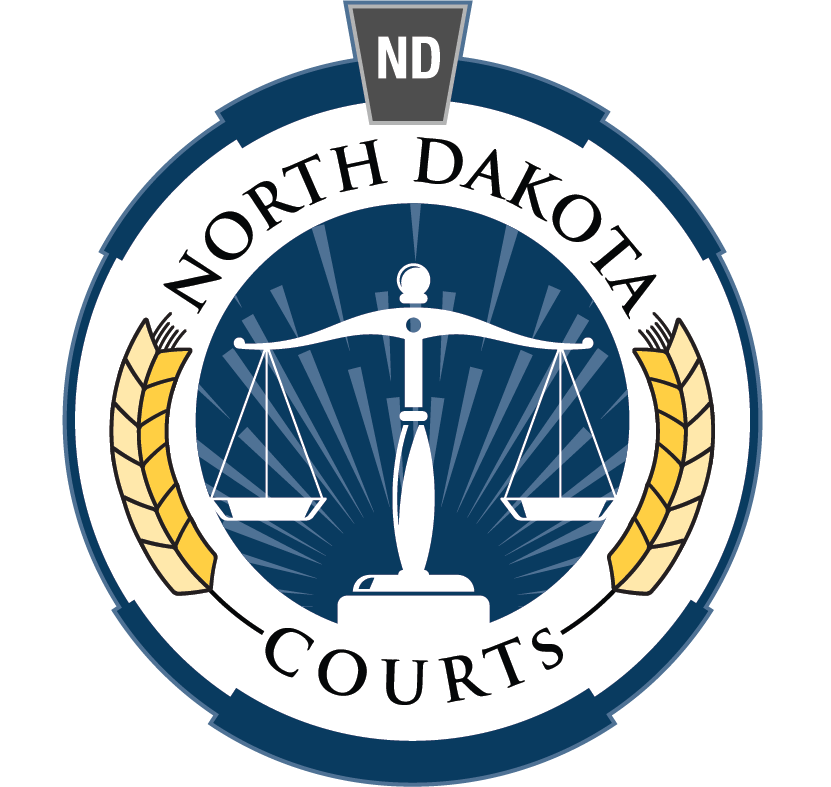Administrative Rule 45 - RECORDS MANAGEMENT PROGRAM FOR SUPREME COURT RECORDS
Effective Date: 3/1/2001
Obsolete Date: 8/1/2001
Section 1. Statement of Authority, Policy and Scope.
a. Under Article VI, Section 3, of the North Dakota Constitution, the Supreme Court has authority to promulgate rules regarding the administration of court records.
b. The Supreme Court recognizes the need to provide a policy that addresses the retention and disposition of those Supreme Court records maintained by the Clerk of the Supreme Court as listed in Section 2.
c. The Clerk of the Supreme Court is responsible for the retention, imaging, or disposition of records maintained by the Clerk's office. See Rule 45, N.D.R.App.P.
Section 2. Applicable Record Defined.
a. Supreme Court Case Files contain the docket sheets, briefs, computer diskette of briefs, appendices, transcripts, computer diskette of transcripts, other substantive pleadings and orders, the final order or opinion disposing of the case, and the judgment. In appeals relating to the Disciplinary Board, Judicial Conduct Commission, and Bar Board, the Supreme Court case file will also contain the record on appeal.
b. Supreme Court Docket is the official summary of the proceedings in the case maintained by the Clerk. The docket includes information about the case, including case number and case type, parties to the case, attorneys of record, chronological list of all documents filed in the case, and actions taken by the Court.
c. Supreme Court Change of Judge Register consists of those documents filed under Administrative Rule 2 and all assignments or appointments of judges or surrogate judges made by the Chief Justice, Justice, Clerk of the Supreme Court, or the Supreme Court.
d. Bar Board Files contain the application, test results, character and fitness evaluation, any investigatory documents, motions for admission in absentia, if applicable, executed power of attorney, oath of office and attorney's pledge. Bar Board Files are not public, but limited information under the North Dakota Admission to Practice Rules may be released.
e. Minutes include notes taken by the clerk or deputy during oral argument and motions conference.
f. Rules Case Files contain the petition, proposed changes, comments (if any), sound recording (if any), disposition and final rule.
Section 3. Disposition of Supreme Court Records.
Disposition means:
a. destruction by burning or shredding, if confidential;b. destruction by ordinary means, such as landfill or recycling, if not confidential; or
c. transfer to the State Archivist under Section 8.
Section 4. Supreme Court Record of Disposition.
The Supreme Court Clerk shall keep a record of the disposition of any Supreme Court Record maintained in the Clerk's office. This record must include the title, the Supreme Court number if applicable, a description of the contents, the inclusive years of the records, and the date and means of disposition. For Supreme Court case files, a notation of the date and means of disposition on the docket constitutes compliance with this section.
Section 5. Supreme Court Records Disposition.
The Clerk of the Supreme Court will prepare a Supreme Court Records Retention Schedule and submit it to the Supreme Court for approval. The Supreme Court Records Retention Schedule must identify and describe each applicable record as defined in Section 2. The approved Supreme Court Records Retention Schedule will be filed in the office of the Clerk of the Supreme Court.
Section 6. Notice of Intent to Destroy.
a. Records may be destroyed after they have been maintained for the retention period.
b. The Clerk of the Supreme Court will notify the State Archivist, at least 60 days prior to destruction of public records, in writing, of the intended disposition of the records.
c. Upon the request of the State Archivist, public records awaiting destruction will be transferred to the State Archivist or to an agency or institution that meets the criteria of the State Archivist.
d. Arrangements will be made by the State Archivist to take possession of the records requested within 60 days of notice to the State Archivist. The State Archivist shall
complete certification for archival transfer and send it to the Clerk of the Supreme Court after the records have been transferred.
Section 7. Permanent Retention.
a. Supreme Court records assigned "permanent" retention periods must be retained by the Clerk of the Supreme Court for an indefinite period of time subject to review by the Supreme Court. Records may be recorded, maintained and preserved upon traditional paper media, electronic media (text or digital images), or microfilm or microfiche (including computer output to microfilm or microfiche).
b. Upon mutual agreement, the Clerk of the Supreme Court may deposit public records designated "permanent" with the State Archivist for preservation under Section 8.
Section 8. Correspondence and General Administrative Files.
a. Financial records maintained by the Clerk's office will be disposed of in accordance with Fiscal Department Records Retention Schedule requirements.
b. Nothing in this rule prohibits the Clerk of the Supreme Court from disposing of general office and correspondence files regarding the administrative responsibilities of the Supreme Court after seven years.
Dated at Bismarck, North Dakota, December 13, 2000.
Gerald W. VandeWalle, Chief Justice
William A. Neumann, Justice
Dale V. Sandstrom, Justice
Mary Muehlen Maring, Justice
Carol Ronning Kapsner, Justice
ATTEST:
Penny Miller, Clerk
SOURCE: Adopted effective March 1, 2001.
SUPREME COURT RECORDS RETENTION SCHEDULE
1. Supreme Court Case Files
A. The briefs, petition for rehearing, and other substantive pleadings will be maintained permanently.B. In appeals relating to the Disciplinary Board, Judicial Conduct Commission, and Bar Board, the record on appeal will be maintained permanently.
C. All substantive orders, including correspondence containing substantive orders, will be maintained permanently.
D. The final order or opinion disposing of the case will be maintained
permanently.
E. The judgment will be maintained permanently.
F. The appendices will be maintained for 5 years.
G. The transcript will be maintained for 5 years.
H. Computer diskettes containing transcripts and briefs will be maintained for 5 years.
2. Supreme Court Docket will be maintained permanently.
3. Supreme Court Change of Judge Register
A. Demands for change of judge and orders for assignment under §29-15-21, NDCC, will be maintained for 5 years.B. Demand for Change of Judge docket sheets will be maintained permanently.
4. Bar Board Files
A. The Supreme Court will maintain applicant files for 15 years after the applicant is admitted to the bar or 5 years after an applicant's death, whichever is earlier, unless the applicant is the subject of litigation or disciplinary proceedings.B. The Roll of Attorneys will be maintained permanently.
C. Records of the State Bar Board are subject to Rule 12, North Dakota Admission to Practice Rules.
5. Minutes of the Supreme Court will be maintained permanently.
6. Rules will be maintained permanently.
7. Financial records maintained by the Clerk's office will be disposed of in accordance with Fiscal Department Records Retention Schedule requirements.
8. General office and correspondence files will be maintained for seven years and, thereafter, may be destroyed at the direction of the Clerk of the Supreme Court.
SOURCE: Adopted effective March 1, 2001. Amended effective August 1, 2001, to reflect the name change of the State Bar Board to State Board of Law Examiners. Amended effective August 11, 2021.

